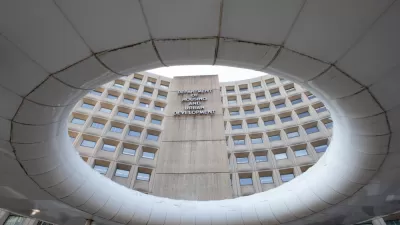A former housing and urban development secretary and a professor of sociology oppose the Trump administration's proposed changes to the Affirmatively Furthering Fair Housing rule.

Shaun Donovan, former secretary of the U.S. Department of Housing and Urban Developer, writes an opinion piece for the New York Times to opposed proposed changes to the Affirmatively Furthering fair Housing rule, announced the Trump administration in January 2020.
Donovan explains the key terms in the contemporary debate over fair housing—disparate impact and affirmatively furthering fair housing—and the progress made under the Obama administration to implement policies to address both:
At HUD, I codified and strengthened these principles. In 2013, the agency issued a formal disparate impact regulation based on decades of unanimous judicial consensus. And in the most important civil rights decision involving housing in a generation, the Supreme Court upheld the disparate impact principle in 2015, recognizing it as consistent with the “central purpose” of the Fair Housing Act. I also began improving HUD’s approach to affirmatively furthering fair housing and my successor, Julián Castro, completed it with a regulation in 2015.
Donovan's purpose in writing the opinion piece is to oppose changes proposed by the Trump administration to "gut" disparate impact standards and "fundamentally undermine" affirmatively furthering standards.
Donovan's opposition to the Trump administration's proposed changes is echoed in an opinion piece written by Gregory D. Squires, professor of Sociology and Public Policy and Public Administration at George Washington University, and published by American Banker, which calls the proposed actions "yet another significant step backward."
"As for its new proposal, HUD should simply scrap it. That would advance the agency’s efforts to fulfill its mandate to make fair housing a reality and lead to the balanced living patterns envisioned when the Fair Housing Act was passed," concludes the editorial.
FULL STORY: The Trump Administration Is Clearing the Way for Housing Discrimination

Alabama: Trump Terminates Settlements for Black Communities Harmed By Raw Sewage
Trump deemed the landmark civil rights agreement “illegal DEI and environmental justice policy.”

Study: Maui’s Plan to Convert Vacation Rentals to Long-Term Housing Could Cause Nearly $1 Billion Economic Loss
The plan would reduce visitor accommodation by 25% resulting in 1,900 jobs lost.

Why Should We Subsidize Public Transportation?
Many public transit agencies face financial stress due to rising costs, declining fare revenue, and declining subsidies. Transit advocates must provide a strong business case for increasing public transit funding.

Paris Bike Boom Leads to Steep Drop in Air Pollution
The French city’s air quality has improved dramatically in the past 20 years, coinciding with a growth in cycling.

Why Housing Costs More to Build in California Than in Texas
Hard costs like labor and materials combined with ‘soft’ costs such as permitting make building in the San Francisco Bay Area almost three times as costly as in Texas cities.

San Diego County Sees a Rise in Urban Coyotes
San Diego County experiences a rise in urban coyotes, as sightings become prevalent throughout its urban neighbourhoods and surrounding areas.
Urban Design for Planners 1: Software Tools
This six-course series explores essential urban design concepts using open source software and equips planners with the tools they need to participate fully in the urban design process.
Planning for Universal Design
Learn the tools for implementing Universal Design in planning regulations.
Smith Gee Studio
Alamo Area Metropolitan Planning Organization
City of Santa Clarita
Institute for Housing and Urban Development Studies (IHS)
City of Grandview
Harvard GSD Executive Education
Toledo-Lucas County Plan Commissions
Salt Lake City
NYU Wagner Graduate School of Public Service




























